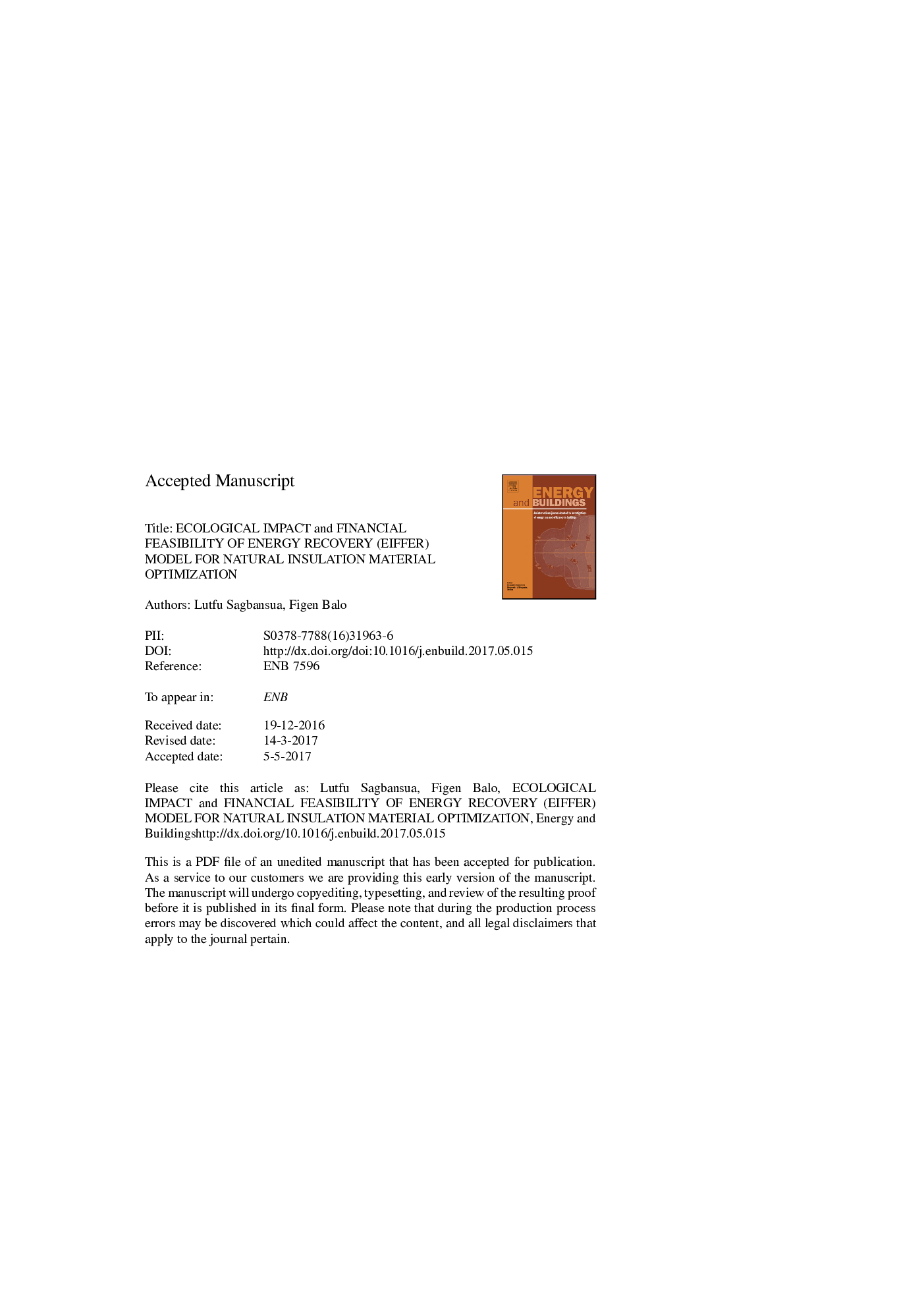| Article ID | Journal | Published Year | Pages | File Type |
|---|---|---|---|---|
| 4919022 | Energy and Buildings | 2017 | 28 Pages |
Abstract
The buildings are major users of energy sources worldwide. The growing concerns on preserving energy as well as ecological impacts of conventional energy resources have resulted in a demand for green buildings. The insulation of external wall has an important impact on the decrease of energy consumption in building design projects that decreases SO2-CO2 emissions. The aim of this study is to determine the optimal thickness of natural insulation material in regards to heating loads at different provinces for a sandwich wall. The optimal insulation thickness in building envelope for fourteen different provinces from two climatic regions is studied. For the region of Eastern Anatolia, payback periods, emissions of SO2-CO2, and energy savings over 10 years of lifetime, based on insulation thickness and sensitivity analysis are calculated using three types of fuel sources (natural gas, fuel-oil, and coal) and four of the most eco-efficient natural insulation materials (Wood Fiber Plate, Wood Wool Slab, Expanded Perlite, Expanded Cork) based on global warming potential (kg CO2-Eq/kg) and water demand (l/kg). Ecological and financial analyses of insulation materials are conducted by an algorithm designed in LINGO optimization software. Results of sensitivity analysis display that the energy saving from natural insulation materials is bigger, more effective, and the payback period is shorter for higher degree-day cities. The study shows that the application of eco-efficient materials in buildings has the potential of substituting the conventional materials.
Related Topics
Physical Sciences and Engineering
Energy
Renewable Energy, Sustainability and the Environment
Authors
Lutfu Sagbansua, Figen Balo,
